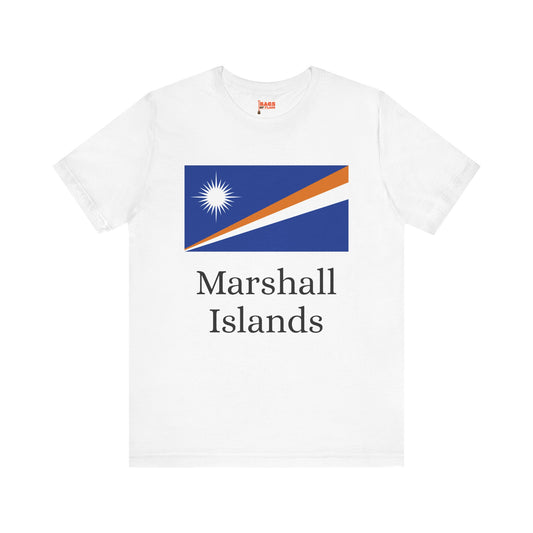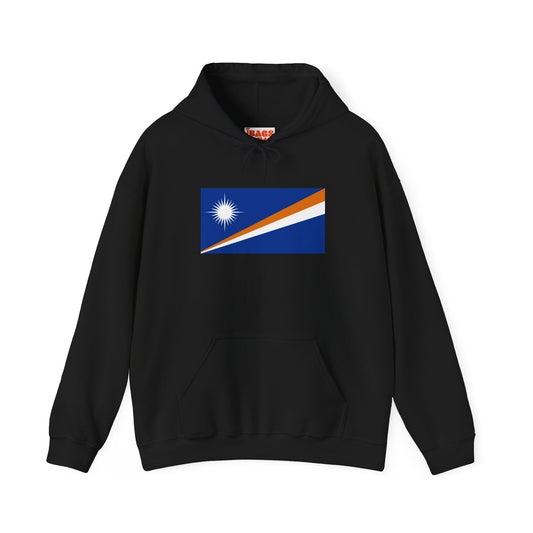-
Marshall Islands Sweatshirt
Regular price $34.15 USDRegular priceUnit price / per -
Marshall Islands Inspired Sweatshirt
Regular price $34.15 USDRegular priceUnit price / per -
Marshall Islands Pillow
Regular price $22.65 USDRegular priceUnit price / per -
Marshall Islands Backpack
Regular price $59.79 USDRegular priceUnit price / per -
Marshall Islands Leather Patch Hat
Regular price $18.85 USDRegular priceUnit price / per -
Marshall Islands Mug
Regular price $11.65 USDRegular priceUnit price / per -
Marshall Islands Trucker Cap
Regular price $14.90 USDRegular priceUnit price / per -
Marshall Islands Hoodies
Regular price $34.40 USDRegular priceUnit price / per -
Marshall Islands Inspired Hoodies
Regular price $34.40 USDRegular priceUnit price / per -
Marshall Islands T-shirts
Regular price $22.79 USDRegular priceUnit price / per -
Marshall Islands Flag Hoodies
Regular price $34.40 USDRegular priceUnit price / per -
Marshall Islands Flag on T-shirt
Regular price $22.79 USDRegular priceUnit price / per -
Marshall Islands Inspired T-shirt
Regular price $22.79 USDRegular priceUnit price / per
Collection: Marshall Islands
The Marshall Islands flag symbolizes pride and identity for the people of this Pacific island nation. With its distinctive design and colors, the flag represents the rich history and culture of the Marshall Islands. We will explore the design, history, symbolism, current uses, controversies, and additional facts about the Marshall Islands flag.
Overview of the Marshall Islands Flag

The Marshall Islands flag showcases a vibrant and meaningful design, featuring a vast blue backdrop intersected diagonally by orange and white stripes. These diagonal bands extend from the flag's lower hoist-side corner to the upper fly-side corner, creating a dynamic visual effect. At the heart of the flag lies a distinctive white star with 24 points. This element is not just a decorative feature; it serves a deeper purpose by representing the country's 24 electoral districts.
The chosen colors of blue, white, and orange are not arbitrary but are imbued with significance. Blue symbolizes the expansive Pacific Ocean that encircles the islands, crucial to the nation's identity and livelihood. White is a nod to the ideals of peace and courage, fundamental values the island nation holds dear. Lastly, the orange stripe vividly represents the rich cultural heritage of the people and the leadership that guides them. Together, these elements combine to create a flag that is not only visually striking but also deeply symbolic of the Marshall Islands' identity, aspirations, and place in the world.
Historical Context of the Flag
The Marshall Islands flag was officially adopted on May 1, 1979, a significant date that marked the country's newfound independence from the United States Trust Territory of the Pacific Islands. This historic event was the culmination of a yearning for self-governance and identity, setting the stage for adopting a national symbol reflecting the aspirations and unity of the Marshallese people. The design process for the flag was inclusive, encouraging participation from across the nation, which eventually led to the selection of the proposal by Emlain Kabua, who served as the country's first President, and his wife, Mary Jack Kabua. Their design stood out for its deep symbolism and connection to the Marshallese culture and environment. Since its adoption, the flag has flown to symbolize the nation's sovereignty, resilience, and hope for the future. Over the years, it has remained unchanged, continuing to embody the enduring spirit and pride of the Marshall Islands as they navigate their path on the global stage.
Symbolism Behind the Design

The intricate symbolism of the Marshall Islands flag is rich with meaning and reflects the nation's ethos and geography. Central to its design is the expansive blue field, symbolic of the Pacific Ocean, crucial to the islands' culture and sustenance. In contrasting orange and white, the radiating diagonal stripes weave a narrative of bravery and peace, essential virtues that have steered the islanders through challenges. These stripes are not merely decorative but directional, leading from the lower hoist to the upper fly-side corner, suggesting a forward and upward trajectory for the nation.
The flag's crowning feature, a white 24-pointed star, is a beacon of unity, symbolizing the coming together of the country's 24 electoral districts. Each point of the star stands as a testament to the collective spirit of the Marshallese people, illuminating their shared journey toward a brighter future. Through these symbols, the flag narrates a story of resilience, hope, and interconnectedness, anchoring the Marshallese identity firmly in the vastness of the Pacific and the ideals that guide them.
Current Relevance of the Flag
Today, the Marshall Islands flag holds a position of esteem and visibility in the nation's public life and international stage. It is a common sight at various significant occasions, ranging from official government ceremonies to vibrant Independence Day festivities, where it is displayed with great pride. In the military context, the flag is honored during parades and is a symbolic presence at ceremonies that underscore the courage and dedication of service members. Beyond these traditional uses, the flag is a symbol of national unity and identity, flying high in schools, public buildings, and in communities across the islands.
While the flag is generally a source of national pride, it has not been without its controversies. Debates have emerged regarding its resemblance to the flag of another nation, prompting discussions about the need for a unique redesign that more distinctly reflects the identity of the Marshall Islands. These discussions highlight the ongoing dialogue within the country about representation and national symbols. Moreover, the flag's presence in international forums and events underscores the Marshall Islands' sovereignty and active participation in global affairs, reinforcing its status as a symbol of the country's resilience, aspirations, and place in the international community.
Additional Facts About the Marshall Islands Flag
The protocol for handling the Marshall Islands flag is steeped in respect and tradition. The flag must be displayed to prevent it from making contact with the ground, a common practice that signifies the nation's respect for its symbol. Furthermore, it is customary for the flag to be hoisted at the first light of dawn and respectfully lowered as the sun sets, marking the beginning and the end of the day with a tribute to national pride and sovereignty.
The selection process for the current flag design was a participatory and inclusive national event, ultimately leading to a design that resonated deeply with the Marshallese people's sense of identity and aspirations. This process highlights the democratic values of the nation and the importance of collective representation in symbols of national significance. Additionally, the frequent sight of the Marshall Islands flag alongside the United States flag at various events and locations is a visual representation of the enduring relationship between the two countries, stemming from their shared history and continuing into mutual respect and cooperation on the global stage.


























